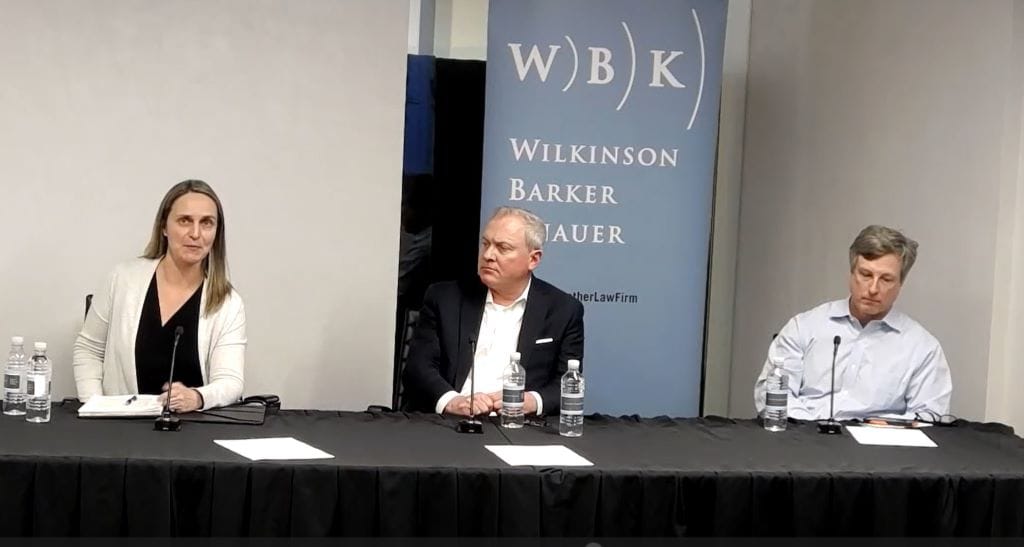Industry Dissent on Whether Spectrum Sharing is Sustainable
Experts disagree on the capabilities of spectrum sharing, particularly the CBRS model.
Teralyn Whipple

WASHINGTON, March 22, 2023 – Industry leaders disagreed on the capabilities of spectrum sharing and its future in the United States at a Federal Communications Bar Association event Wednesday.
Dynamic spectrum sharing – a technology that allows for 4G, LTE, and 5G wireless to be used in the same frequency bands – is essential to a successful national spectrum strategy, said Jennifer McCarthy of Federated Wireless.
Establishing a combination of access points for one frequency band can open its availability for all prospective users, she continued, touting the success of the Citizens Broadband Radio Service established by the Federal Communications Commission in 2012.
CBRS is the spectrum in the 3.5 GHz to 3.7 GHz band which is shared through a three-tiered framework. Access to the spectrum is managed by a dynamic spectrum access system where incumbent users have protected access, priority access users enter through competitive auction, and general authorized access is given to a broad pool of users when not in use by others.
Representative of T-Mobile, John Hunter, disagreed, claiming that dynamic spectrum sharing means there is less power available for technologies, particularly on higher frequencies that don’t propagate very far despite power disparities. As such, deploying the CBRS framework at scale across the country is not cost-feasible, he said.
We should not conclude to share just for the sake of sharing, he said, particularly because it will decrease utility of the band so much that it will decline quality of networks down the line. “In many cases, sharing just outright won’t work,” said Hunter.
Colleen King, vice president of regulatory affairs at Charter Communications, pushed against the argument that dynamic sharing’s lower power will stop providers from providing great service, claiming that it instead allows for more carriers to provide great service. In fact, the CBRS auction had 228 winning bids, 10 times the amount of other spectrum auctions, she said.
The FCC’s Communications Marketplace Report showed that in one market where Verizon is using the CBRS framework, the company is providing “much faster speeds” than its other markets, King cited. Charter will use the CBRS system for its spectrum uses, she said.
Panelists nevertheless agreed on the importance of maintaining US leadership in the spectrum space by developing a national spectrum strategy to address sharing issues.
The panel followed considerable debate over spectrum allocation, sharing, and expansion. Earlier this week, industry leaders suggested that the allocation process be updated in preparation for future disputes. Additionally, debate continues over whether 5G operations can be shared on the 12 GHz spectrum with satellite service providers.









Member discussion